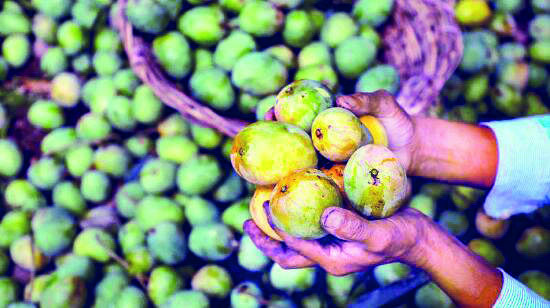In a first, mangoes from North 24-Pgns, Hooghly to be showcased at fest in Delhi

Kolkata: For the first time, this year mangoes from at least two new districts—North 24-Parganas and Hooghly— will find its place in the consignment that will be sent for the month-long Mango Festival that kicks off at Handloom Haat, Janpath in New Delhi from June 16.
The state government is sending 43.5 metric tonnes of a wide variety of mangoes and its by-products like 'kasundi', 'chatni' etc. The last time mangoes from three districts namely Malda, Murshidabad and Nadia were sent to the festival.
The festival could not be held for two consecutive years in 2020 and 2021 due to Covid pandemic. "Around 400 varieties of mangoes are grown in Bengal. Our aim is to include as much variety as possible in our consignment to the capital. We have also received requests to add mangoes grown in Bankura," a senior official of state Horticulture department said.
The three varieties from Malda—namely Lakshmanbhog, Khirsapati and Fajli—for which the state has GI will be forming bulk of the consignment. The office of the Resident Commissioner has informed the state Horticulture department regarding business interactions for possible investment in the sector at the venue.
The state Minister for Food Processing Industries and Horticulture, Subrata Saha, is also likely to travel to Delhi along with senior department officials to be present on the opening day for business interactions.
The Resident Commissioner's office has also laid special emphasis on warehousing facilities for proper preservation and storage of the mangoes that will be transported. In 2019, the state government had provided a subsidy of Rs 22 per kg to the producers, who will be going with their produce to the Fair. Such facilities will also be provided this time. The amount of subsidy will be finalised soon.
The department has asked the District Magistrates to compile a list of all the varieties of mangoes in their respective districts, considering the fact that there are a number of types that are not known because they are not commercialised. The department believes that such types form at least 2 per cent of the total mango production.



